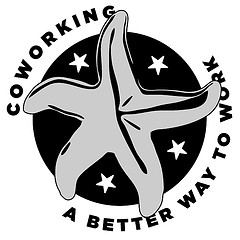 Contrary to naysayers' and pessimists' early warnings, distance in the wired world is decidedly not dead. In fact, as has been pointed out a gazillion times already, the revitalization of many urban cores in the US and around the world has coincided with the miraculous rise of the internet and wireless technology. But why have people not retreated to mountaintops as was feared at the onset of the internet era? If you can have a creative and fulfilling career from anywhere, why not work from a rustic cabin overlooking a placid lake in a bucolic wood?
Contrary to naysayers' and pessimists' early warnings, distance in the wired world is decidedly not dead. In fact, as has been pointed out a gazillion times already, the revitalization of many urban cores in the US and around the world has coincided with the miraculous rise of the internet and wireless technology. But why have people not retreated to mountaintops as was feared at the onset of the internet era? If you can have a creative and fulfilling career from anywhere, why not work from a rustic cabin overlooking a placid lake in a bucolic wood?Blech. Boring.
A recent post on coworking (a trend that I am particularly enamored with) at Coroflot's Creative Seeds Blog inadvertently highlights why the internet has pushed people closer together rather than pulling them apart. Coroflot's lays out the options for those who don't have a formal office -- temporary cubicle, cobbled-together home office, isolating coffee shop -- and then explains that none of these environments has "the most important quality of the ideal creative workspace: other creative workers with whom to interact. It's well understood that good ideas and good creative work flow almost never flourish in a vacuum, and yet increasingly we are asked to make them do so."
Cities are more diverse, active places. They are larger and thus, by default, contain more possible answers to any question of location. Thus, for someone who is free to work anywhere, cities provide the most enticing environment. By living in a city, a creative worker has the opportunity to change up their daily workspace. There is always the option of moving out to The Sticks, but when The Sticks compete on a level playing field with the urban core, guess which one usually wins out?
There's another fact that's been repeated a gazillion times over the past few months that may provide a hint: for the first time in the history of civilization, half of the world's population now lives where?
(Photo from Flickr user MathieuCoste. The original full-color version can be viewed by clicking the photo.)
Links:
Your Dream Office is Just Over There: Co-Working and the Instant Creative Community (Coroflot's Creative Seeds Blog)

4 comments:
The fact that you and i are having this conversation is proof enough that the internet has obliterated any of our previous concepts of space and distance.
Where most of the world's urbanization is occurring does not provide an option to telecommute from the Sticks. The cry that distance is not dead is just as sensational as the claim that telecommunications will kill distance.
Actually, the idea that distance is dead or dying has little to do with moving to a rural utopia. The geographic focus was and is the distance between cities, particularly the alpha world cities such as NYC and London.
Furthermore, we are beginning to see elements of urbanization in some relatively out-of-the-way places. There is no doubt that the Internet helped make this kind of exurban development possible.
Upon re-reading this post and these comments today, I realize that using the "distance is not dead" trope was a misstep. I used the line incorrectly. I get a Mulligan, right? ;-)
However, while I agree that the net does play some part in facilitating exurban development, I would disagree with the suggestion that it were the main or even a major cause thereof. From what I've read, the exurbs are usually home to the supercommuters. There are definitely some creative industry folks, but I hardly think that's the norm. Most of the blame for exurban development can be placed on the same factors that caused original suburban development in the US -- cheap land, cheap fuel, improved freeways, and paranoia.
I have no doubt that the factors you cite are driving exurban development. DC is a classic case of extreme commuting and driving until you qualify for a mortgage. However, the exurbs are home to more people than daily extreme commuters. What about the Wall Street exec you see sitting in a coffee shop in Bozeman, MT? What is fueling all the growth in Bend, OR?
We are seeing more and more co-location, people dividing time between two places. Better telecommunications and cheaper travel make this possible. This pattern is quite common here in Colorado. People live far from the big city, only going to Denver or Colorado Springs for vital face-to-face meetings. Most of the time, they are working from home up in the sticks.
Businesses are popping in smaller cities and rural towns. That you can have the NYT delivered to your door in the middle of nowhere Idaho is very telling. City comforts are moving to the country, a trend that has held sway since the urban refugees of the 70s took to the hills.
Then there are all the businesses moving into suburban parks. Not too long ago, what is now Silicon Valley was farm land and open space. These booming areas are nothing akin to the cityscapes of Jane Jacobs. Commuting is still king. The location of work is more widely scattered. Higher densities continue to sprawl outwards, not inwards.
Post a Comment